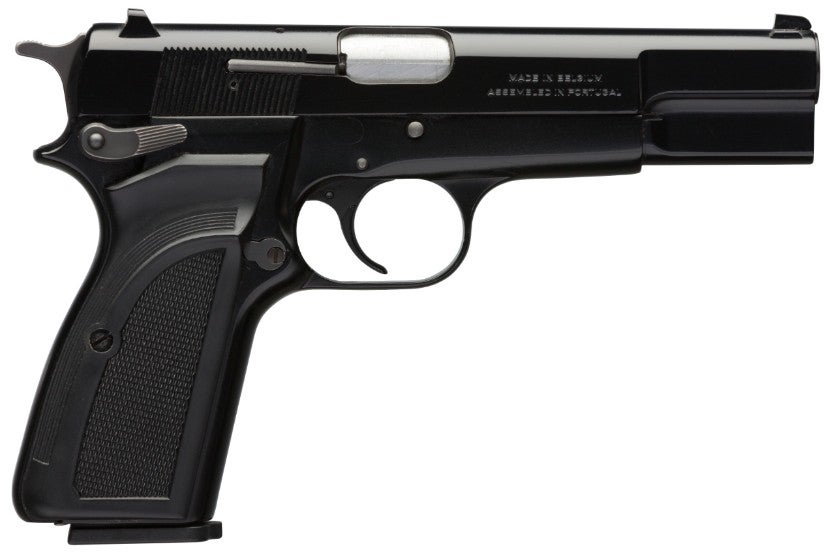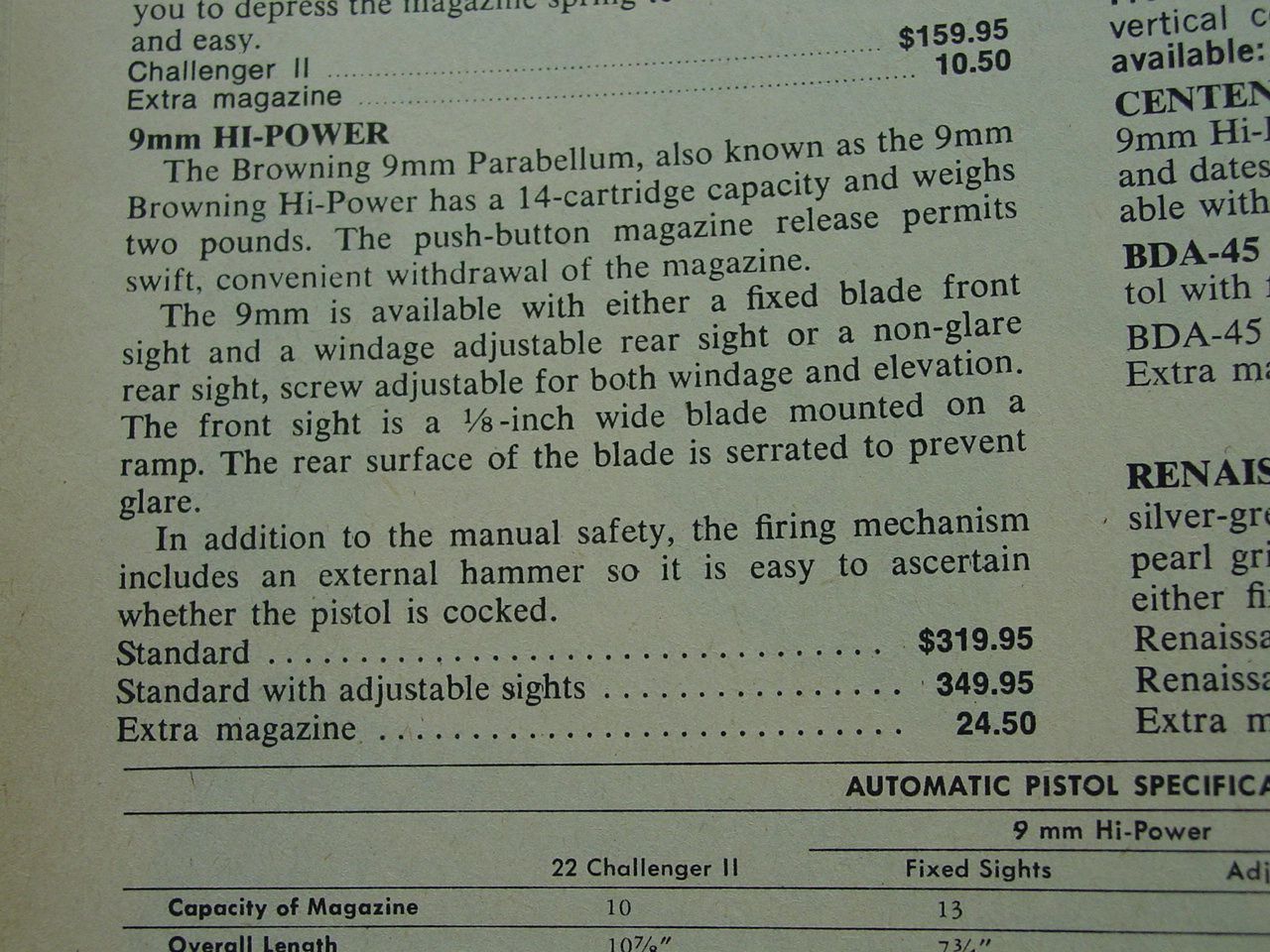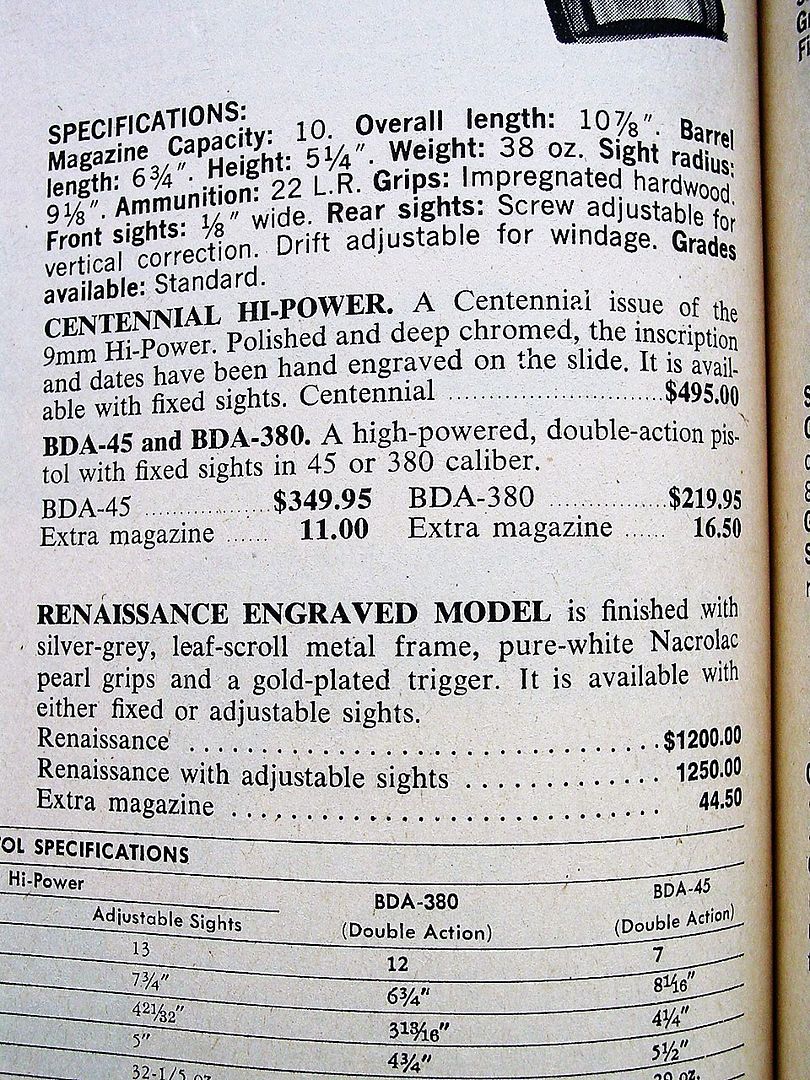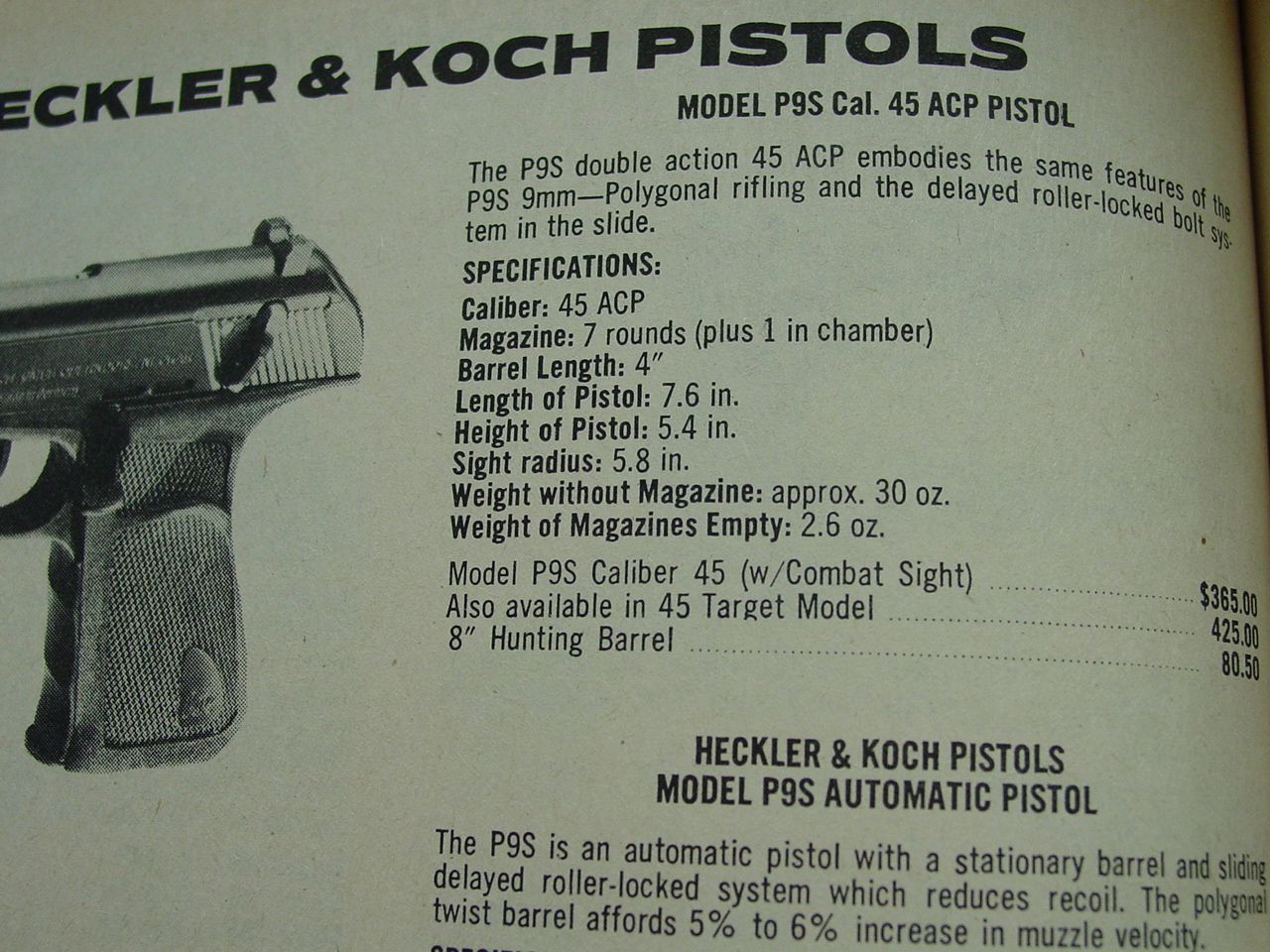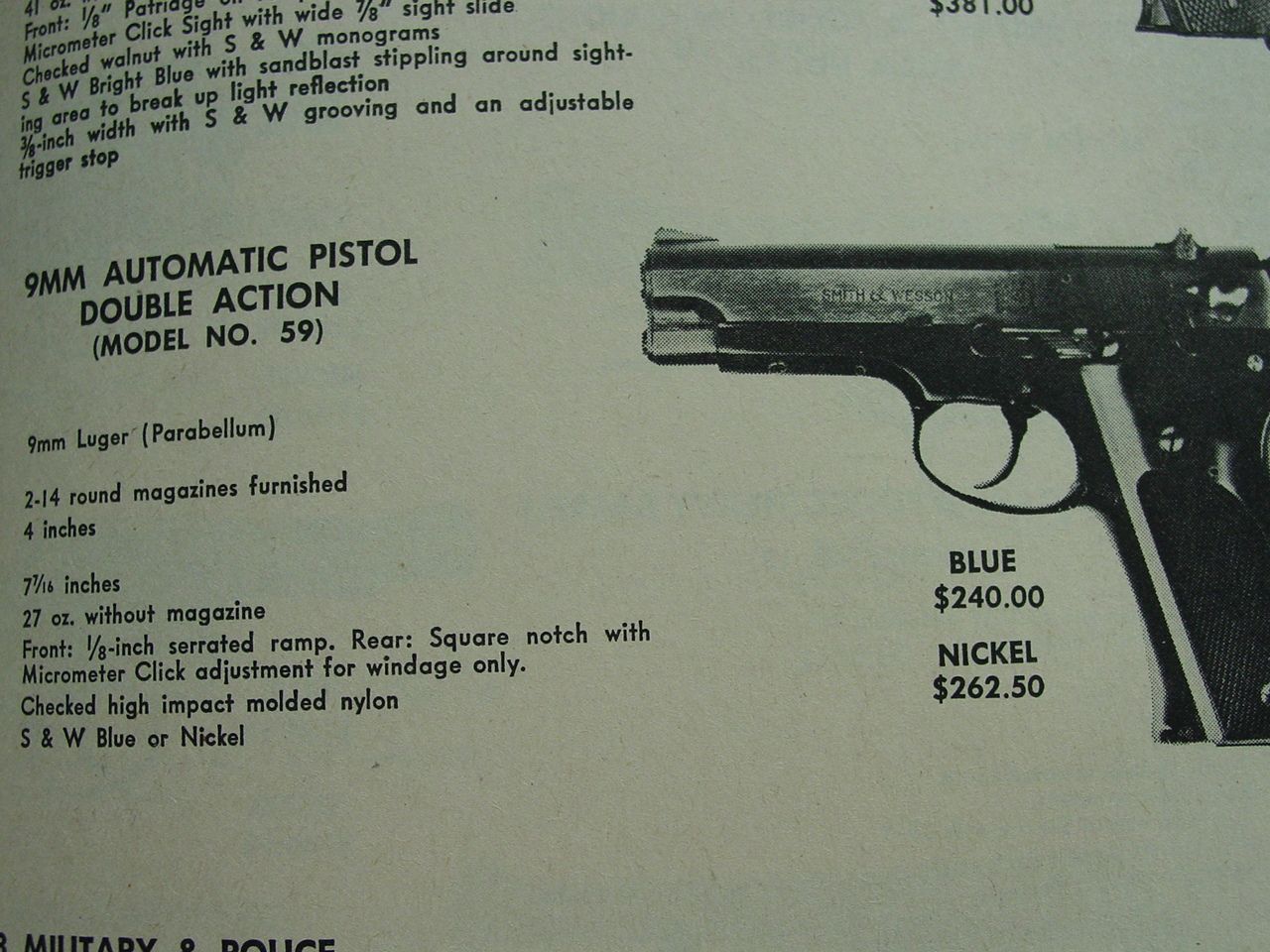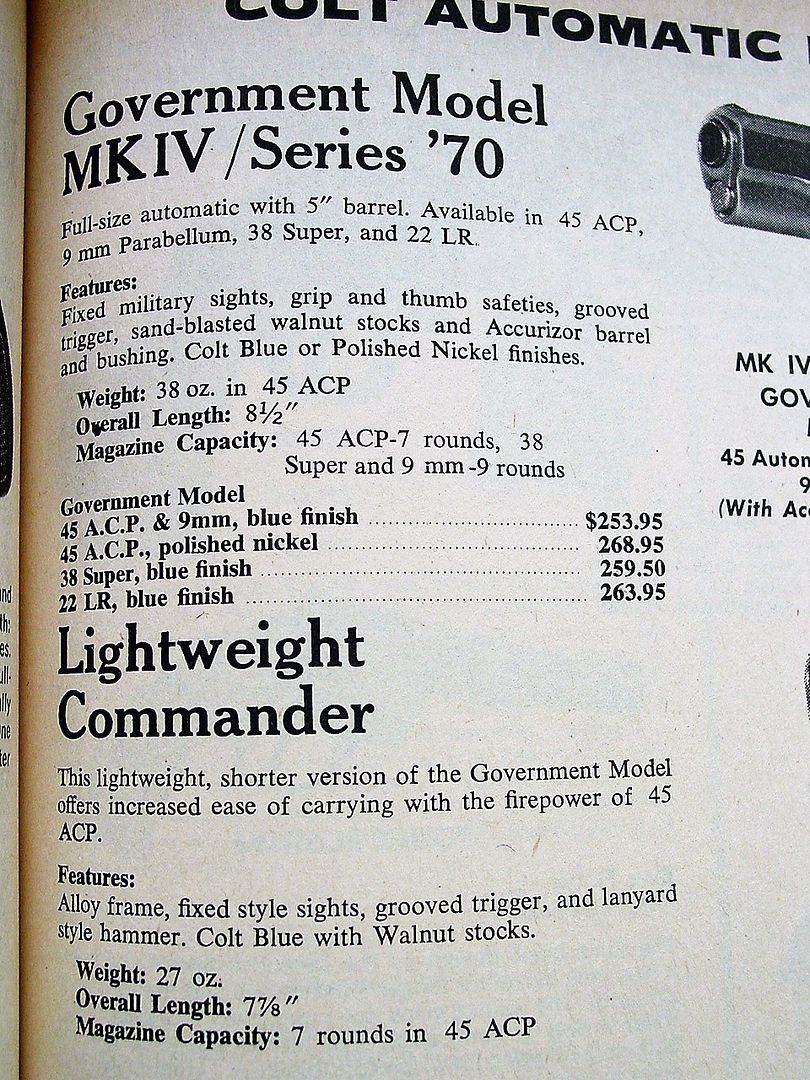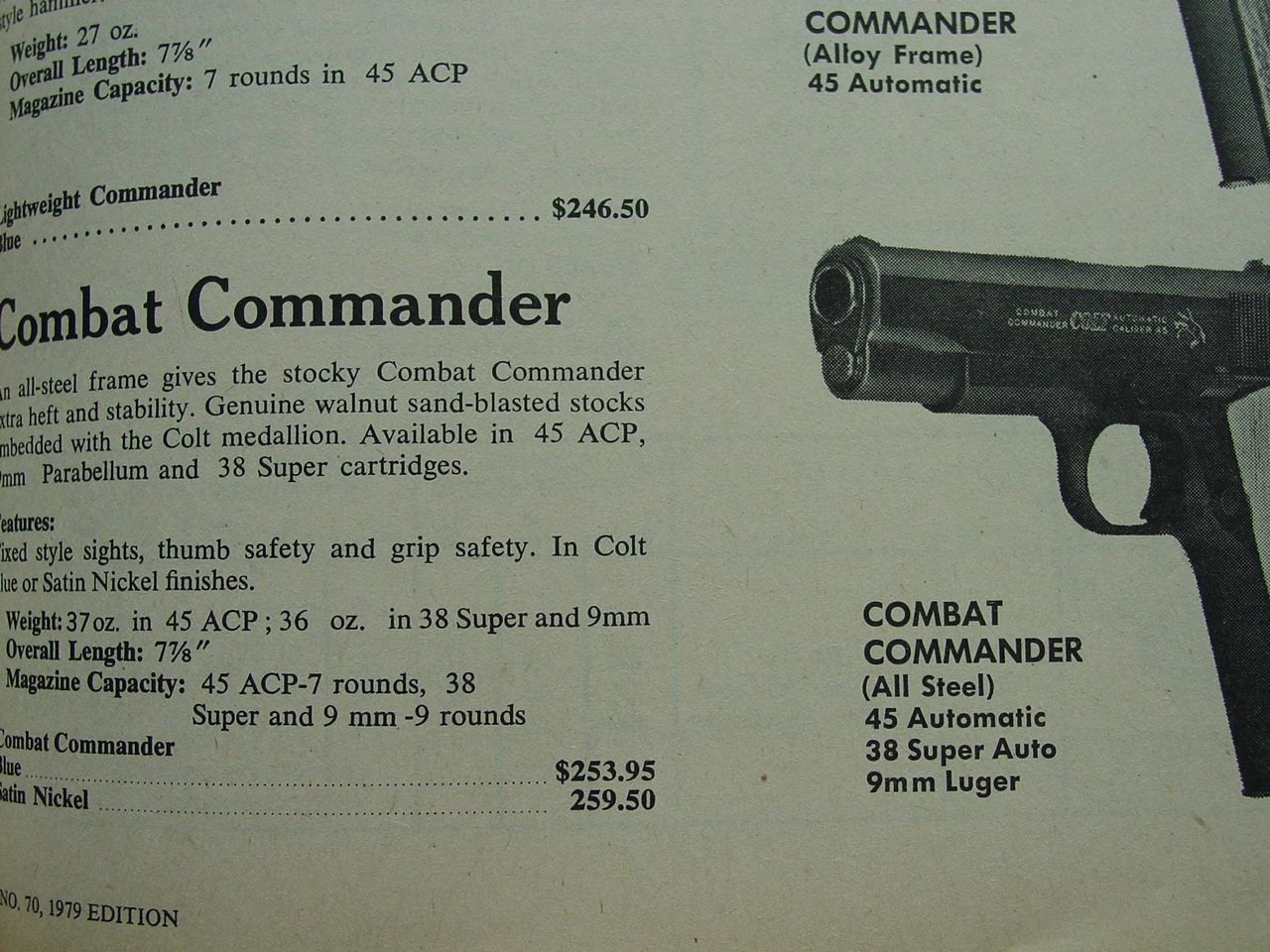My bad on the Mark 1 Ruger. Sometimes when I write quickly I can get the secondary details wrong. That's what happens when one nit picks on a minor point.
Canada still uses the Hi-Power. The UK began to replace it as a service sidearm about 2-3 years ago for the Glock.
http://www.guns.com/2017/01/13/canada-to-replace-1940s-browning-hi-powers-with-new-pistol/
I think my self and others adequately explained why the BHP while popular in the U.S. was never quite as popular as other designs. Walt S summarized these well a few posts back. It was not the trigger that held it back.
Charles Daly, the firearms importer, found that they were losing money on their version of the gun, not because they were not selling or because there was no market for them but because of the cost of production of the guns vs. the return on the investment. They produced their fine version of the gun from about 2003-2006 or a year or so later. The guns were well received. The profit margin however was too low to sustain them and Daly itself was having trouble. These guns were selling for less than $400. in the mid 2000s.
Daly did not produce the gun itself. It was made from parts bought from FEG and assembled in the U.S. the first several hundred were built by Dan Wesson (before it became a part of CZ). But Wesson was in financial trouble and was bought by CZ in 2005 or so as I recall. Daly contracted with Magnum Research to do the guns. Daly had also been bought out by Michael Kassner of KBI international. About this time, 2010, the Hungarian firm FEG which had been having difficulties, declared bankruptcy.
Daly, in addition to it's extensive line of imported shotguns and rifles also imported Philippine made 1911's from Armscorp. It was a time of extensive transition in the arms industry. KBI and Daly closed their doors in 2010 or so.
For a number of years you could buy an FEG Hi-power, the Argentine version or the Daly versions for 1/2 the price, or lower of the FN gun. They sold well and still do on the used gun market.
tipoc
Canada still uses the Hi-Power. The UK began to replace it as a service sidearm about 2-3 years ago for the Glock.
http://www.guns.com/2017/01/13/canada-to-replace-1940s-browning-hi-powers-with-new-pistol/
I think my self and others adequately explained why the BHP while popular in the U.S. was never quite as popular as other designs. Walt S summarized these well a few posts back. It was not the trigger that held it back.
Charles Daly, the firearms importer, found that they were losing money on their version of the gun, not because they were not selling or because there was no market for them but because of the cost of production of the guns vs. the return on the investment. They produced their fine version of the gun from about 2003-2006 or a year or so later. The guns were well received. The profit margin however was too low to sustain them and Daly itself was having trouble. These guns were selling for less than $400. in the mid 2000s.
Daly did not produce the gun itself. It was made from parts bought from FEG and assembled in the U.S. the first several hundred were built by Dan Wesson (before it became a part of CZ). But Wesson was in financial trouble and was bought by CZ in 2005 or so as I recall. Daly contracted with Magnum Research to do the guns. Daly had also been bought out by Michael Kassner of KBI international. About this time, 2010, the Hungarian firm FEG which had been having difficulties, declared bankruptcy.
Daly, in addition to it's extensive line of imported shotguns and rifles also imported Philippine made 1911's from Armscorp. It was a time of extensive transition in the arms industry. KBI and Daly closed their doors in 2010 or so.
For a number of years you could buy an FEG Hi-power, the Argentine version or the Daly versions for 1/2 the price, or lower of the FN gun. They sold well and still do on the used gun market.
tipoc
Last edited:

